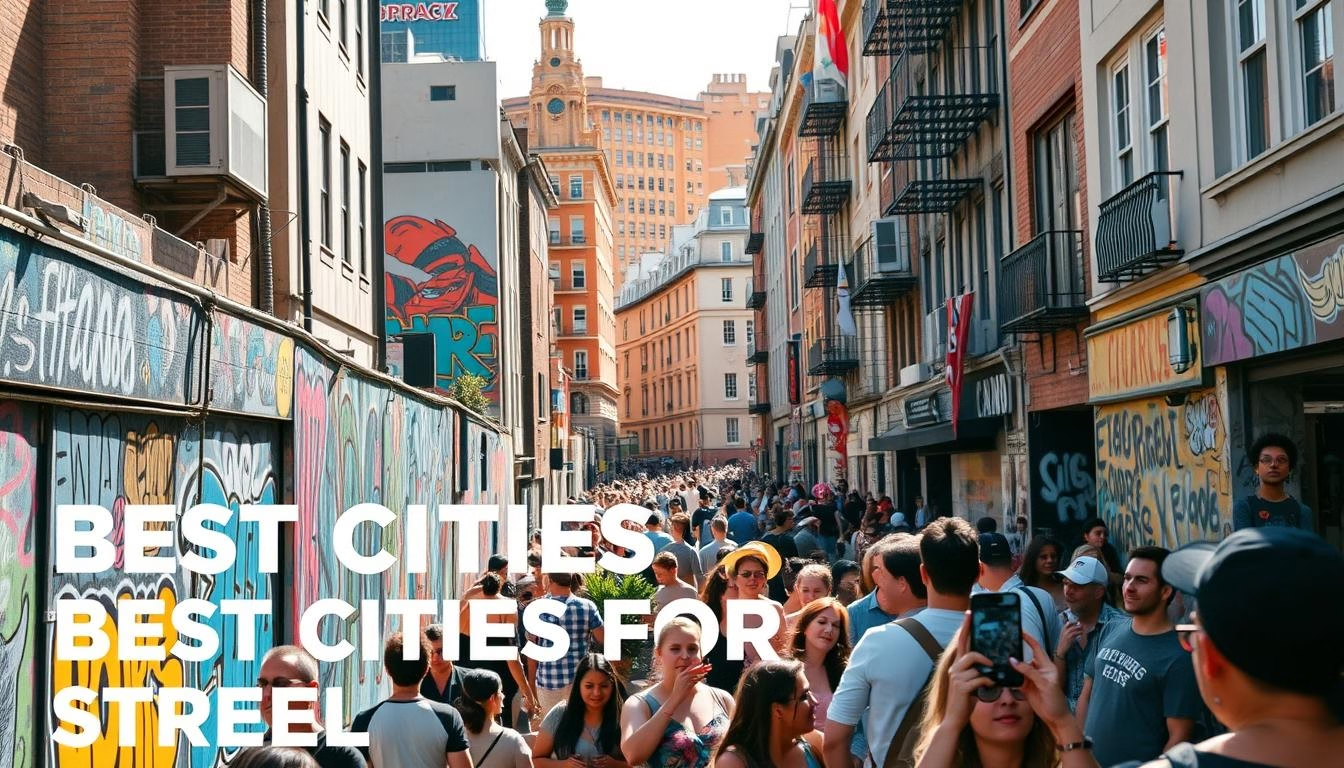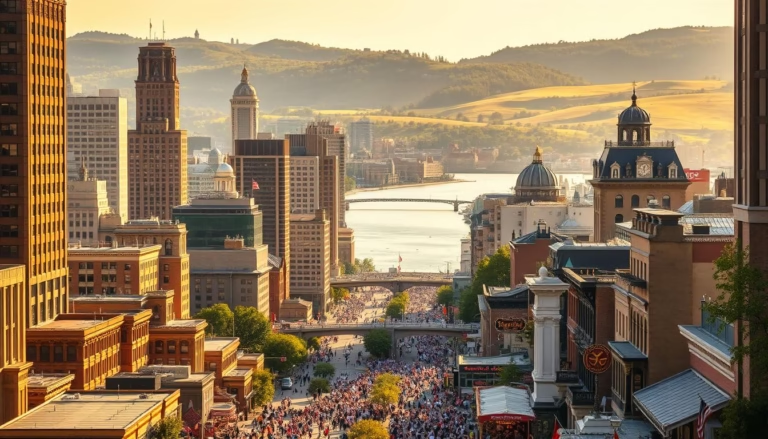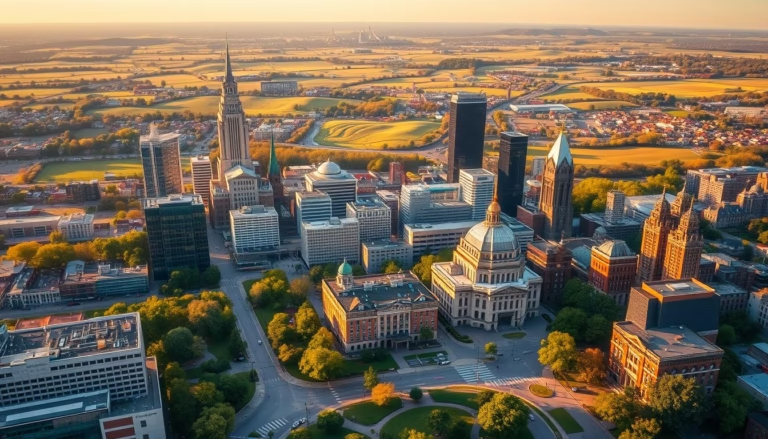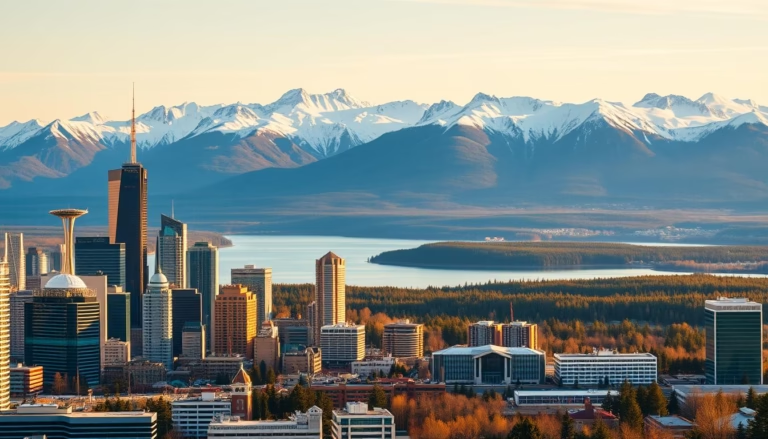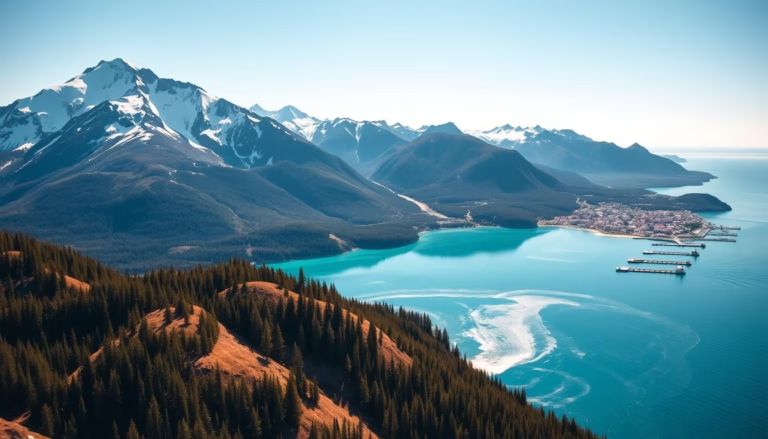Discover the Best Cities in the World for Street Art
Did you know street art tourism has surged by 450% in the last decade? What began as rebellious spray-painted signatures now drives travelers to hunt for sprawling murals and hidden alleyway masterpieces. This explosion of color on brick and concrete proves creativity thrives where you least expect it.
Once dismissed as vandalism, these open-air galleries now define neighborhoods from Brooklyn to Bangkok. Artists transform drab subway stations into thought-provoking installations and turn abandoned factories into kaleidoscopic landmarks. Cities worldwide celebrate this visual revolution through festivals and curated walking tours.
Our global journey reveals destinations where every corner tells a story. You’ll find political statements disguised as playful cartoons in South America and optical illusions that make buildings seem to breathe. These urban hubs don’t just display art – they live it.
Key Takeaways
- Street art tourism has grown exponentially, becoming a major travel motivator
- Modern murals often carry social messages while enhancing urban landscapes
- Many destinations now officially support and commission public artworks
- Creative expression ranges from massive wall murals to intricate stencil work
- Unexpected locations often host the most groundbreaking artistic statements
- Interactive maps and local tours help visitors discover hidden gems
Pack your virtual bags as we explore neighborhoods where spray cans replace paintbrushes. You’ll discover how forgotten spaces become cultural landmarks and why certain cities attract visionary creators. Ready to see which destinations made our colorful list?
Introduction: Where Art Meets Urban Culture
Urban landscapes have transformed into dynamic galleries where creativity pulses through every alleyway. Once seen as rebellious markings, street art now drives cultural conversations and economic growth. This shift reflects society’s growing appreciation for visual storytelling in shared spaces.
Overview of the Global Street Art Scene
From São Paulo’s towering murals to Melbourne’s laneway masterpieces, urban creativity knows no borders. Artists blend spray cans with social commentary, turning blank walls into living history books. Festivals like Berlin’s Urban Nation showcase how cities embrace these visual dialogues.
Recent studies reveal a surprising benefit: neighborhoods with curated murals see property values rise up to 9%. This economic impact encourages cities to fund legal walls and walking tours. The result? A thriving art scene that attracts travelers and locals alike.
What Makes a City a Street Art Haven?
Three key ingredients create fertile ground for urban masterpieces:
| Factor | Impact | Example |
|---|---|---|
| Supportive Policies | Reduces vandalism fines | Bristol’s commissioned murals |
| Artist Networks | Fosters collaboration | Wynwood Walls, Miami |
| Cultural Openness | Encourages diverse themes | Johannesburg’s protest art |
These elements help urban culture flourish organically. When residents view walls as canvases rather than crime scenes, entire districts reinvent themselves. The blend of local stories and global influences creates spaces where every mural sparks curiosity.
Exploring Global Street Art: An Overview
Urban creativity blooms where concrete meets imagination. From São Paulo’s political murals to Melbourne’s stenciled alleyways, artists reimagine public spaces as dynamic storytelling platforms. Their work reflects local identities while connecting to universal themes of community and change.
Modern creators employ surprising methods to make their mark. Beyond spray cans, you’ll find:
| Technique | Unique Feature | Hotspot |
|---|---|---|
| 3D Installations | Creates optical illusions | Dubai Design District |
| Wheat Pasting | Allows quick large-scale work | Paris’ 13th Arrondissement |
| LED Projections | Temporary nighttime displays | Tokyo’s Shibuya Crossing |
Cultural influences shape regional styles dramatically. South African townships showcase resistance art through bold symbols, while Brazilian favelas burst with carnival-inspired colors. Festivals like POW! WOW! Hawaii bridge these differences, fostering cross-border collaborations.
Legal walls and municipal programs now protect significant works worldwide. Lisbon’s urban art gallery preserves 50+ murals, attracting 300,000 annual visitors. This shift from rebellion to recognition proves art’s power to redefine spaces and economies alike.
Top Picks: best cities in the world for street art
Urban centers are redefining their skylines with vibrant expressions on walls. Our team analyzed 50+ destinations using three key metrics: creative density per square mile, social media engagement, and cultural storytelling through visuals.
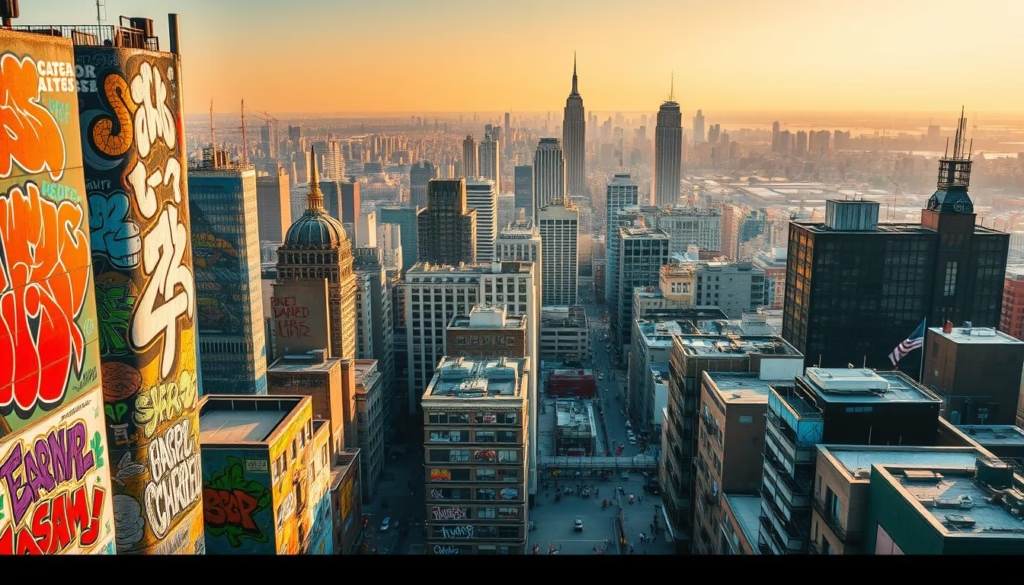
Criteria for Selection
We prioritized locations where artistic expression shapes community identity. The evaluation matrix included:
| Factor | Measurement | Leading Example |
|---|---|---|
| Mural Density | 12+ works per mile | Athens, Greece |
| Social Media Buzz | 50k+ Instagram tags | Brussels, Belgium |
| Style Diversity | 5+ artistic techniques | Papeete, French Polynesia |
Notable Examples and Visual Impact
Lisbon’s urban art gallery transforms tram routes into open-air exhibitions. Parisian arrondissements showcase wheat-paste masterpieces that change weekly. Athens surprises visitors with 500+ political murals near ancient ruins.
Smaller hubs like Papeete prove size doesn’t limit impact. Their ocean-inspired installations blend traditional Polynesian patterns with modern spray techniques. These destinations prove public art thrives when communities embrace walls as shared storyboards.
Historical Backdrops Fueling Urban Murals
Cities wear their histories like layered paintings, with modern murals revealing stories etched into brick and mortar. Artists transform ordinary walls into visual timelines, blending past struggles with present-day hopes. These living archives turn neighborhoods into classrooms where every stroke teaches something new.
Influence of Heritage and Local Stories
Belfast’s Falls Road murals showcase how street art preserves collective memory. Artists depict historical figures and pivotal events using symbols that locals instantly recognize. A 2023 survey found 78% of residents view these works as vital to understanding regional identity.
Three elements frequently appear in heritage-driven murals:
- Iconic landmarks reimagined through modern lenses
- Folk tales visualized in contemporary styles
- Archival photos enlarged to building-scale tributes
Cultural Shifts Reflected in Murals
Northern Ireland’s Peace Walls demonstrate how public art evolves with society. What began as political dividers now host collaborative projects between former adversaries. Recent additions include:
| Theme | Artistic Approach | Social Impact |
|---|---|---|
| Reconciliation | Interlocking hands motif | 73% approval in community polls |
| Economic Growth | Vibrant market scenes | 22% tourism increase since 2020 |
| Youth Voices | Augmented reality overlays | 40+ school partnerships formed |
These transformations prove walls can bridge divides when local culture guides the brush. As neighborhoods change, their murals become living records of progress – equal parts mirror and map for communities navigating change.
Dynamic Street Art Scenes in the Americas
The Americas burst with urban creativity where walls become conversation starters. From Canada’s snowy streets to Chile’s coastal slopes, public art transforms ordinary spaces into cultural landmarks. This continental canvas reveals how communities embrace visual storytelling.
Vibrant Murals from North to South America
Montreal’s Saint-Laurent Boulevard dazzles with ever-changing displays. Each June, the Mural Festival floods the city with 80+ creators painting live. “It’s like the walls breathe new colors overnight,” says local guide Marie-Claude Tremblay.
Valparaíso’s labyrinthine alleys showcase Chile’s artistic soul. Its 43 hills host kaleidoscopic scenes blending nautical themes with political satire. The port city’s steep streets naturally frame murals that shift perspectives with every turn.
Bogotá rewrote its narrative through street art after 2012 policy changes. Once controversial, murals now celebrate Colombia’s biodiversity and indigenous heritage. Guided tours reveal how artists use abandoned buildings as giant storyboards.
Other hotspots push boundaries:
- Buenos Aires’ Palermo district merges tango rhythms with stencil art
- Philadelphia’s Mural Mile boasts 4,000+ works since 1984
- Mexico City’s Roma neighborhood blends pre-Hispanic symbols with pop culture
These destinations prove the Western Hemisphere thrives as a living gallery. Whether through sanctioned festivals or organic collaborations, urban expression reshapes how we experience cities.
Exploring European Street Art Capitals
Europe’s cityscapes double as dynamic canvases where centuries-old architecture meets modern rebellion. Three urban centers stand out for their innovative approaches to public expression, each blending local history with cutting-edge creativity.
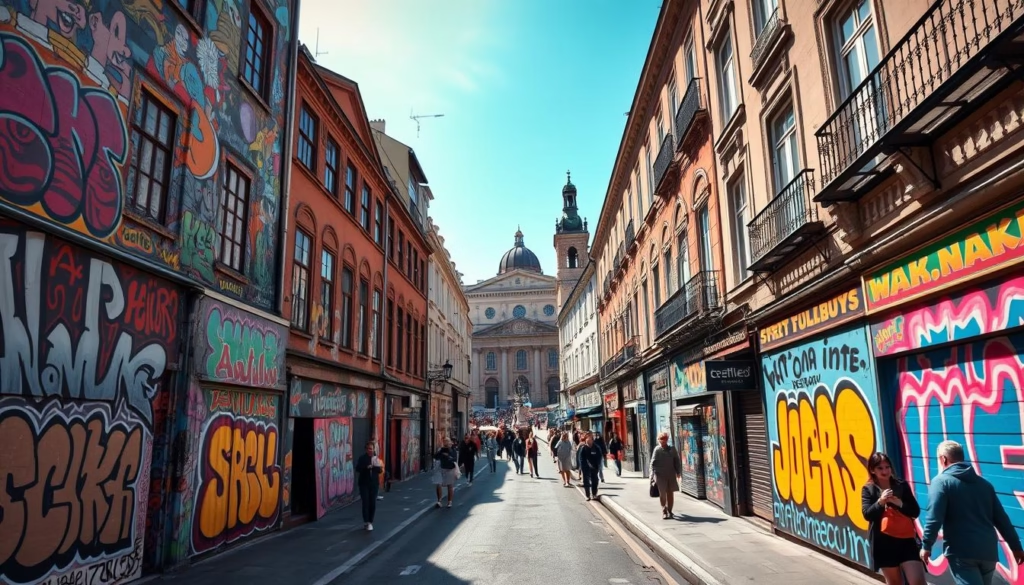
From Paris to Lisbon: A European Tour
Paris’ Belleville district pulses with energy, where Invader’s pixelated mosaics share walls with JR’s photographic wheat-pastes. These neighborhoods showcase:
- Oberkampf’s rotating gallery of stencil works
- Le Marais’ juxtaposition of Renaissance buildings and pop-art murals
- Underground exhibitions in repurposed railway arches
Lisbon’s Bairro Alto transforms at sunset, its steep streets revealing larger-than-life portraits by Vhils. The LX Factory complex demonstrates urban renewal through art:
| Location | Signature Style | Must-See Work |
|---|---|---|
| Underdogs Gallery | Mixed-media installations | Bordalo II’s trash animal sculptures |
| Rua da Esperança | Tile-inspired murals | Vhils’ carved concrete faces |
Urban Renewal and Artistic Expression
Athens’ Exarcheia neighborhood wears its politics on its walls. Graffiti here tackles economic crises and refugee rights, often incorporating ancient Greek motifs. A local artist notes: “Our streets are the people’s parliament – every spray can casts a vote.”
These art capitals prove creativity thrives when communities embrace their walls as collective storyboards. From Lisbon’s sanctioned murals to Athens’ protest art, Europe’s streets pulse with visual dialogues that redefine urban spaces.
Diverse Street Art in the United Kingdom
Walls across the United Kingdom whisper stories through spray paint and stencils. This island nation punches above its weight in shaping global street art culture, blending cheeky humor with social commentary. From Bristol’s rebel roots to Belfast’s healing visuals, every piece reflects its city’s heartbeat.
Bristol, London, and Beyond
Bristol’s Stokes Croft district feels like walking through Banksy’s sketchbook. The mysterious artist’s early works still hide in plain sight here. Nelson Street’s 30-foot murals prove the city treats walls as community storyboards rather than blank surfaces.
London’s Shoreditch neighbourhood buzzes with fresh creations weekly. Brick Lane serves as an open-air resume for rising talents. “You’ll see Tokyo-style anime characters beside classic British satire,” notes local guide Jamal Carter. Underground tour groups decode hidden meanings in these ever-changing displays.
Portsmouth’s coastal walls surprise visitors with nautical-themed installations. The Hotwalls Studios program turns historic fortifications into legal canvases. Local artists and residents collaborate annually to refresh the district’s walls during the “We Shine” festival.
Northern Ireland reveals art’s power to mend divides. Belfast’s Cathedral Quarter mixes peace murals with playful pop culture references. These works transform bullet-marked buildings into symbols of hope, showing how street creativity can rewrite a city’s narrative.
Captivating Street Art in Asia and Beyond
Asia’s ancient temples and bustling markets now share streetscapes with cutting-edge murals that honor heritage while pushing creative boundaries. This fusion of old and new creates visual dialogues where centuries-old techniques meet spray cans and digital projections.
Tradition Meets Modern Graffiti
George Town, Malaysia emerged as an unlikely hub after commissioning Lithuanian artist Ernest Zacharevic in 2012. His iconic bicycle mural on Armenian Street – featuring local children – became the city’s most photographed spot. Visitors can’t resist snapping selfies with the 3D installation that seems to leap off the wall.
Kuala Lumpur’s Kwai Chai Hong lane offers time-travel through art. Artists recreated 1960s Chinatown life using augmented reality overlays. Scan murals with your phone to see painted shopkeepers “come alive” sharing stories about the street’s history.
Other places blend cultural symbols with urban expression:
- Penang’s clan jetty murals incorporate traditional batik patterns
- Seoul’s Ihwa Mural Village mixes hanbok designs with pop-art portraits
- Jakarta’s Kota Tua district uses wayang kulit shadow puppetry motifs
These destinations prove tradition isn’t frozen in time. By weaving ancestral stories into contemporary works, artists create living bridges between generations. The result? Street art that feels both timeless and urgently modern.
Street Art Influencing Local Culture and Tourism
Neighborhoods worldwide are rewriting their identities through vibrant murals that spark dialogue and pride. These cultural identity markers attract curious travelers while giving residents new ways to celebrate their heritage. Festivals now prioritize collaborations between visiting artists and community storytellers.
Cafés and shops near iconic walls report 30% higher foot traffic, proving art drives economic growth. Cities like Philadelphia offer guided tours where visitors meet creators, blending tourism with authentic cultural exchange. Local schools often integrate these murals into history lessons, making walls both galleries and classrooms.
The ripple effect extends beyond aesthetics. Areas embracing public art see increased property values and safer streets. Murals depicting historical events or social issues become gathering spots for meaningful conversations. This community engagement transforms passive viewers into active participants.
As travelers seek authentic experiences, destinations gain recognition through Instagram-worthy walls that tell deeper stories. The fusion of creativity and local economy boosts proves art isn’t just decoration – it’s a dynamic force reshaping how we live and explore.
